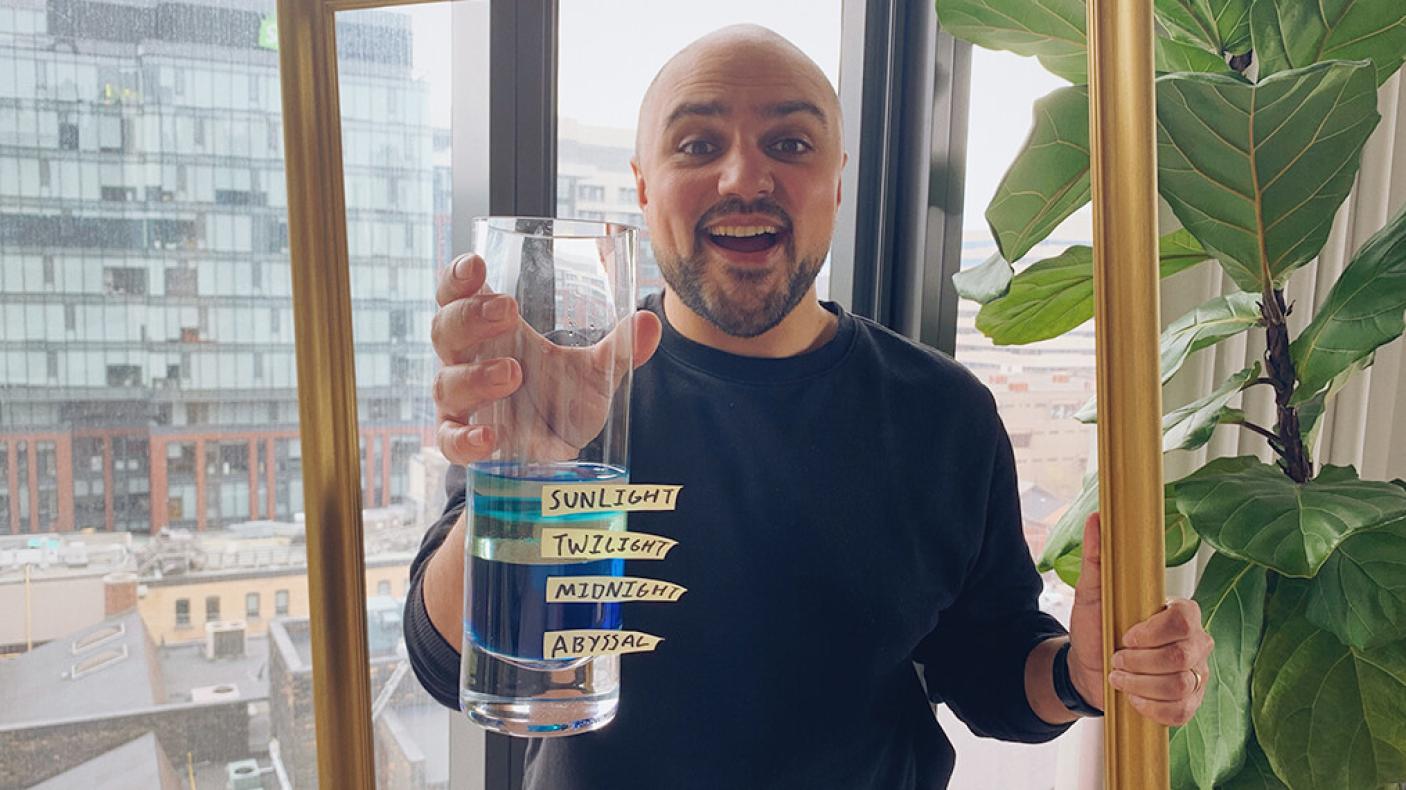ROMKids Show: The One From The Darkest Depths
Category
Audience
Age
About

Tune in every Tuesday at 2:00 pm on Instagram Live @ROMtoronto as ROM Kids Coordinator and Camp Director Kiron Mukherjee combines his passion for children’s education with storytelling to bring to life science, history and art for you and your loved ones in the comfort of your own home. Kiron will share activities, easy at-home crafts, behind the scenes anecdotes and fun facts—all connected to the ROM collections.
This time on the ROMKids Show we jump into a submarine to learn about what lives in our oceans. Evolutionary biologist and curator of invertebrates Dr. Sebastian Kvist returns to talk about how life lives in the darkest depths, the diversity of life in our oceans, and how some of the smallest animals feed the largest! Then we’ll run our own experiment to examine the different zones in the ocean!
Materials
- 100 ml extra grease-fighting dish soap
- 100 ml water
- 100 ml vegetable oil
- 100 ml rubbing alcohol
- tall transparent container like a Mason jar
- blue food colouring
- blue food dye
- eye dropper
Steps
1. Before starting your ocean adventure, work with a trusted adult to make sure your experiment is done safely.
2. In a cup, mix your soap with blue food colouring, trying to get it as dark as possible. Then pour your soap into the center of the container, careful not to hit the sides (if it hits the sides it may interfere with the substances you drop in next).
3. In a cup mix your water and half the amount of food colouring you used with your soap. Using an eye dropper, drop your water along the sides. This will help it to make sure the water doesn’t mix with the soap.
4. If you have oil soluble food dye, mix it into the vegetable oil. Then, like the water, drop it in along the side.

5. Finally, drop in the rubbing alcohol. Now you have the four main zones to the ocean—the sunlight zone, the twilight zone, the midnight zone, and the abyssal zone!
Get to Know Kiron
As the ROMKids Coordinator & Camp Director, Kiron is the public face of the Royal Ontario Museum’s family and children’s programs. Kiron started volunteering at the ROM at age 14 and has never looked back. Though he majored in history at York University, Kiron also considers his early years as a ROMKids camper to be a highly formative part of his education. Now, he strives to provide engaging and educational kids’ programming so that future generations can look back on their ROM experiences as fondly as he has.

